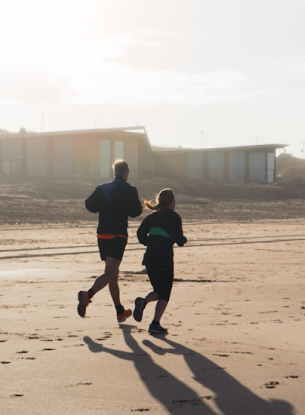How exercise correlates to longevity, how it helps extend lifespan, and more importantly, healthspan
Longevity

How exercise correlates to longevity, how it helps extend lifespan, and more importantly, healthspan
While we all know what lifespan is (the number of years one lives from birth until death), little is known (or we know but choose to accept) what healthspan is.
Simply put, healthspan is the number of years we stay healthy and without chronic / debilitating disease. And by definition, longevity is how much we can lengthen our healthy years so that we can enjoy life to its fullest, narrowing the gap between our healthspan and life span.
So how does exercise extend our healthspan to narrow the gap?
Scientific research consistently supports the positive impact of exercise on longevity. Numerous studies have investigated the relationship between physical activity and lifespan, providing valuable insights into how exercise can influence longevity and delay physical decline.
- Reduce risk of chronic diseases: regular exercise has been associated with a lower risk of developing chronic conditions such as cardiovascular diseases, type 2 diabetes, certain types of cancer, and neurodegenerative disorders. By mitigating these risk factors, exercise contributes to a longer and healthier life.
– Physical Activity Guidelines Advisory Committee. (2018). 2018 Physical Activity Guidelines Advisory Committee Scientific Report. U.S. Department of Health and Human Services.
– Moore, S.C., Patel, A.V., Matthews, C.E., et al. (2012). Leisure time physical activity of moderate to vigorous intensity and mortality: a large pooled cohort analysis. PLoS Medicine, 9(11), e1001335. - Cardiovascular health: engaging in aerobic activities, such as running, cycling, or swimming, improves cardiovascular health. Regular exercise strengthens the heart muscle, enhances circulation, and lowers blood pressure, reducing the risk of heart disease and stroke.
– Thompson, P.D., Buchner, D., Pina, I.L., et al. (2003). Exercise and physical activity in the prevention and treatment of atherosclerotic cardiovascular disease. Circulation, 107(24), 3109-3116. Eijsvogels, T.M., Molossi, S., Lee, D.C., & Emery, M.S. (2016). Exercise at the extremes: the amount of exercise to reduce cardiovascular events. Journal of the American College of Cardiology, 67(3), 316-329. - Quality of life: regular exercise not only extends lifespan but also improves the quality of life. Physical activity enhances mood, reduces stress, improves sleep, boosts energy levels, and enhances overall well-being, contributing to a more fulfilling and enjoyable life.
– Penedo, F.J., & Dahn, J.R. (2005). Exercise and well-being: a review of mental and physical health benefits associated with physical activity. Current Opinion in Psychiatry, 18(2), 189-193.
Now that we know how much exercise can positively impact our healthspan, the next question is – am I doing enough?
To find out the answer – I suggest to set some lifetime goal(s) so that you can then reverse engineer to see if your current training program is comprehensive enough to support your end goal.
Let’s take me as an example – I have identified ten most important physical tasks that can help me achieve the quality of life I seek at the latest stage of my life:
- Be able to physically take care of my family (care for, clean, cook, entertain etc)
- Play two hours of tennis with limited breaks
- Walk up Old Peak Road
- Pick up a 15kg child from the floor
- Stand up from a seated position without support
- Complete daily tasks without backpain
- Swim 100 meters with no rest
- Dead hang for 30 seconds
- Full push up for 10 reps
- Carry heavy suitcases or groceries from end to end
To ensure I can still play tennis when I get older, I would have to do a combination of the below so that I can train my body to meet a required degree of physical versatility.
Strength:specific muscle strength is essential for lateral movement, deceleration ability and protection from the rotational, shear and loading forces that are dispersed through the joints.
Mobility / Joint stability: every groundstroke will put joints under a certain angular speed which will cause them to be subjected to a high level of stress. By training the muscles that are there to provide stability to the joints, it will allow for efficient (and injury free) movement.
Endurance: zone 2 and 5 training will be important as tennis requires a high demand of cardiorespiratory fitness, it is crucial to be trained both anaerobically for performance (playing the duration of 2 hours) and aerobically for recovery during and after play.
So circling back to the question above, if you are able to cover the different pillars of fitness then I would think that you are on the right track. The easiest way to find out is to get a baseline assessment done to understand your current level of performance.
To conclude, I accept that I will be old (any probably wrinkly) in my late years – however, I choose to start training hard and training smart now because I refuse to live the last ten years of my life burdened with a poor quality of life.


